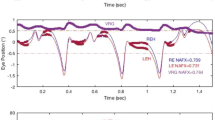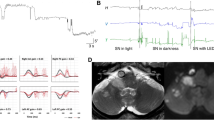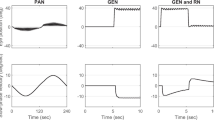Abstract.
The fast phases of latent/manifest latent nystagmus (LMLN) may either cause the target image to fall within (foveating) or outside (defoveating) the foveal area. We previously verified that both types are generated by the same mechanism as voluntary saccades and propose a hypothetical, dual-mode mechanism (computer model) for LMLN that utilizes normal ocular-motor control functions. Fixation data recorded during the past 30 years from 97 subjects with LMLN using both infrared and magnetic search coil oculography were used as a basis for our simulations. The MATLAB/Simulink software was used to construct a robust, modular, ocular motor system model, capable of simulating LMLN. Fast-phase amplitude versus both peak velocity and duration of simulated saccades were equivalent to those of saccades in normal subjects. Based on our LMLN studies, we constructed a hypothetical model in which the slow-phase velocity acted to trigger the change between foveating and defoveating LMLN fast phases. Foveating fast phases were generated during lower slow-phase velocities whereas defoveating fast phases occurred during higher slow-phase velocities. The bidirectional model simulated Alexander's law behavior under all viewing and fixation conditions. Our ocular-motor model accurately simulates LMLN patient ocular motility data and provides a hypothetical explanation for the conditions that result in both foveating and defoveating fast phases. As is the case for normal physiological saccades, the position error determined the saccadic amplitudes for foveating fast phases. However, the final slow-phase velocity determined the amplitudes of defoveating fast phases. In addition, we suggest that individuals with LMLN use their fixation subsystem to further decrease the slow-phase velocity as the target image approaches the foveal center.
Similar content being viewed by others
Author information
Authors and Affiliations
Additional information
Received: 16 June 2000 / Accepted in revised form: 20 May 2001
Rights and permissions
About this article
Cite this article
Dell'Osso, L., Jacobs, J. A normal ocular motor system model that simulates the dual-mode fast phases of latent/manifest latent nystagmus. Biol Cybern 85, 459–471 (2001). https://doi.org/10.1007/s004220100275
Issue Date:
DOI: https://doi.org/10.1007/s004220100275




